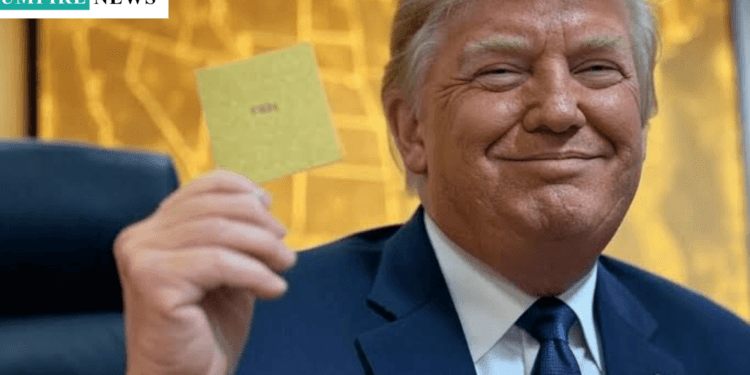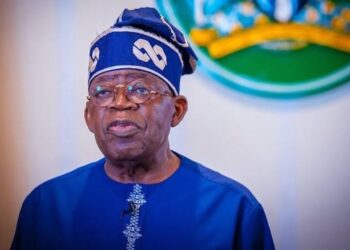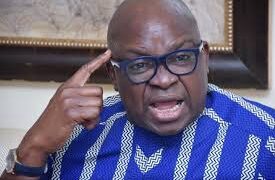President Donald Trump unveiled the first-ever “Gold Card” visa, a high-priced residency permit that will be sold for $5
million each. The announcement, made aboard Air Force One on Thursday, promises to revolutionise how the United
States attracts foreign investment.
Holding a prototype of the card that prominently features his image and the words “The Trump Card,” the president
described the visa as a means of encouraging job creation and economic growth by inviting wealthy foreign nationals into the country.
Trump’s enthusiasm was clear as he held up the new visa and declared, “I’m the first buyer. Pretty exciting, huh?” The
announcement signals his administration’s commitment to attracting top-tier investors who can contribute to the U.S. economy.
With the introduction of the Gold Card, Trump intends to make this high-priced visa a powerful tool for creating jobs
and stimulating growth. By offering a more exclusive option than the traditional green card, the visa is expected to
become a coveted path to permanent residency and U.S. citizenship.
The Trump administration has previously emphasized the economic benefits of such initiatives, aiming to sell up to
one million Gold Cards. The idea is to attract high-net-worth individuals, entrepreneurs, and investors who could inject
significant capital into the U.S. economy.
While Trump believes that this will lead to the creation of jobs, it has sparked debate about whether the program
could widen inequality by providing a path to U.S. residency for only the wealthy elite.
You may also like: Trump Signs Executive Order Targeting Birthright Citizenship
Critics of the Gold Card visa argue that the initiative could undermine the fairness of the immigration system by
creating a two-tiered system that favors the rich. Many fear that this could erode public trust in the immigration
process, which is often seen as a key avenue for individuals seeking a better life in the U.S.
However, Trump remains resolute in his stance, arguing that the program will not only attract business leaders but
also contribute to reducing the national deficit, as wealthy individuals are expected to bring substantial investments to the country.
Another point of controversy lies in the potential eligibility of foreign nationals, including Russian oligarchs. While the
Trump administration has not released full details about who will qualify for the visa, the possibility of wealthy
individuals from controversial backgrounds benefiting from the program has raised concerns.
Nonetheless, the administration insists that the program will adhere to rigorous standards and will be a gateway to those who wish to contribute to U.S. prosperity.
In addition to its economic promises, the Gold Card visa also aligns with Trump’s broader immigration strategy, which
includes cracking down on illegal immigration and promoting legal pathways for those who can contribute to the country’s economic success.
By offering these visas, the Trump administration hopes to strike a balance between boosting legal immigration and
ensuring that foreign nationals can provide value to the U.S.
The Gold Card visa is expected to be available for purchase within two weeks, giving the public and foreign nationals
a limited window to take advantage of this opportunity. As the initiative rolls out, it will undoubtedly reshape discussions on U.S. immigration policy, particularly in terms of attracting high-value investors.



































